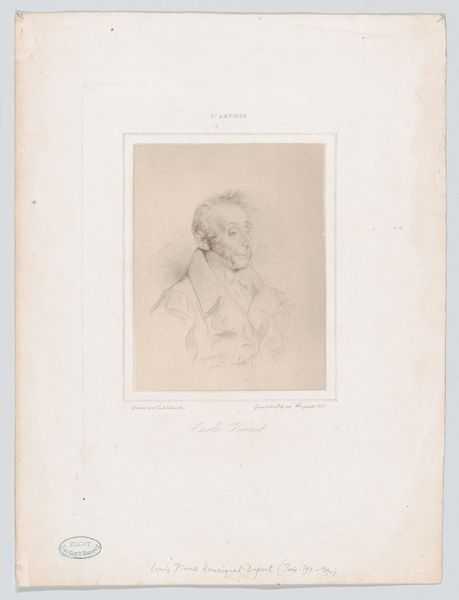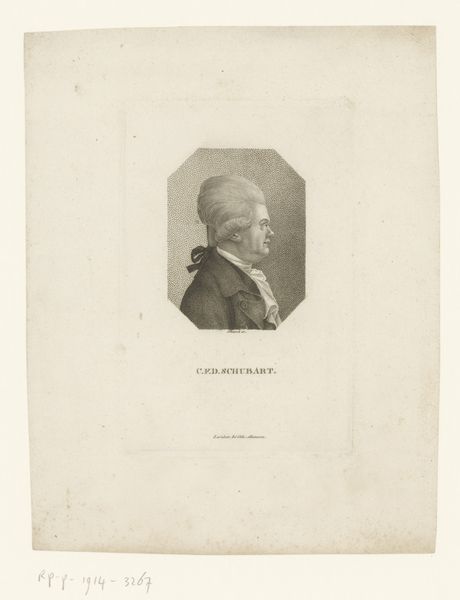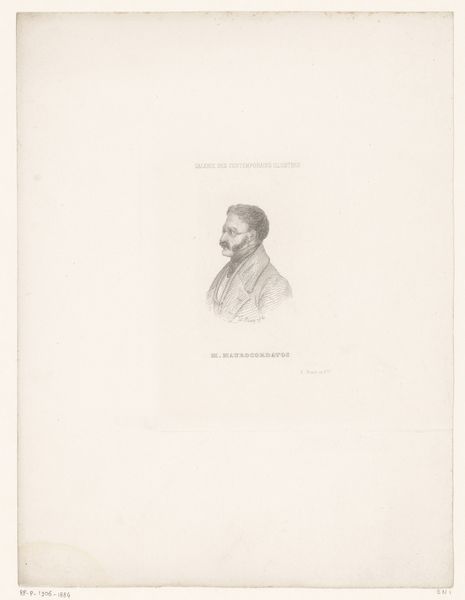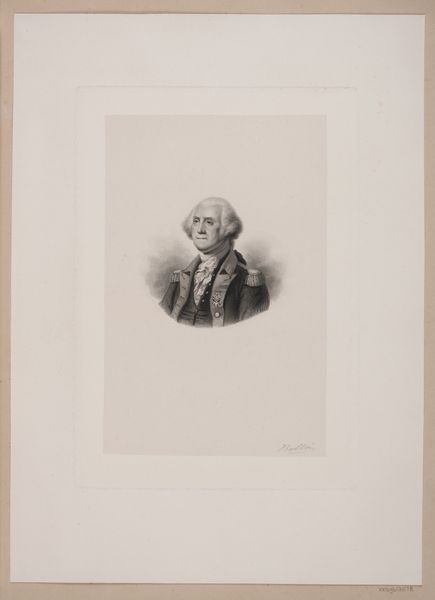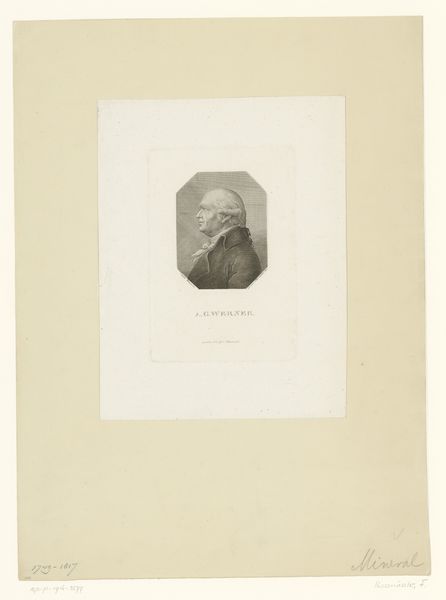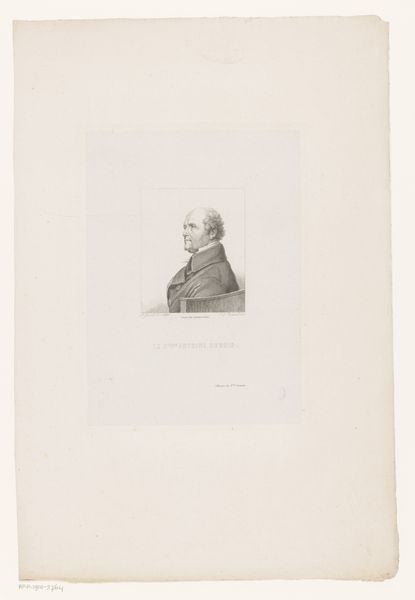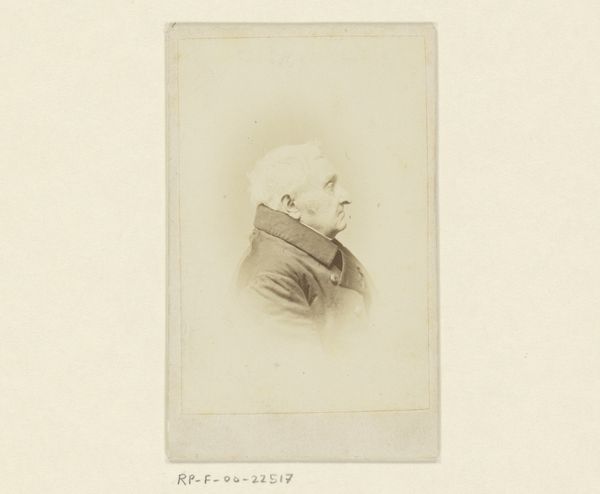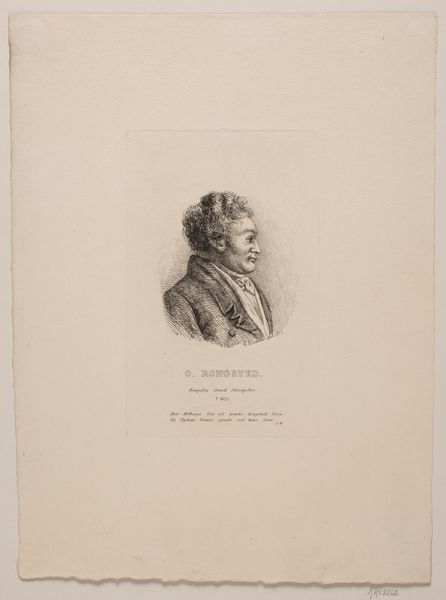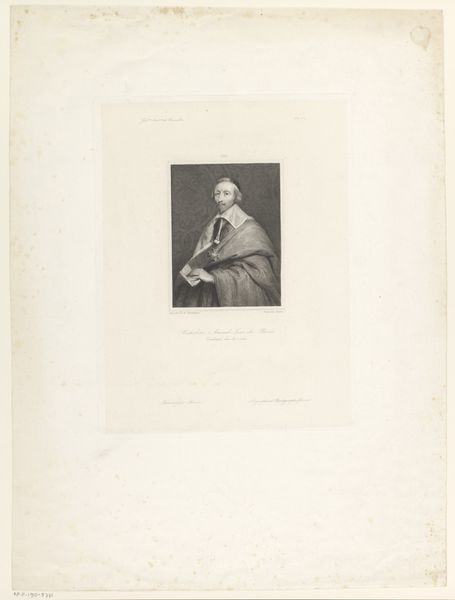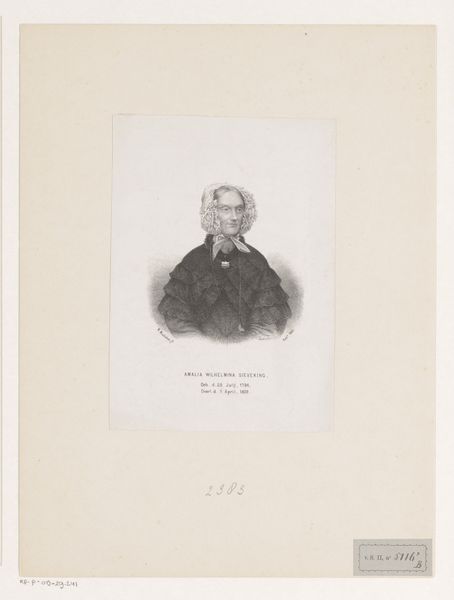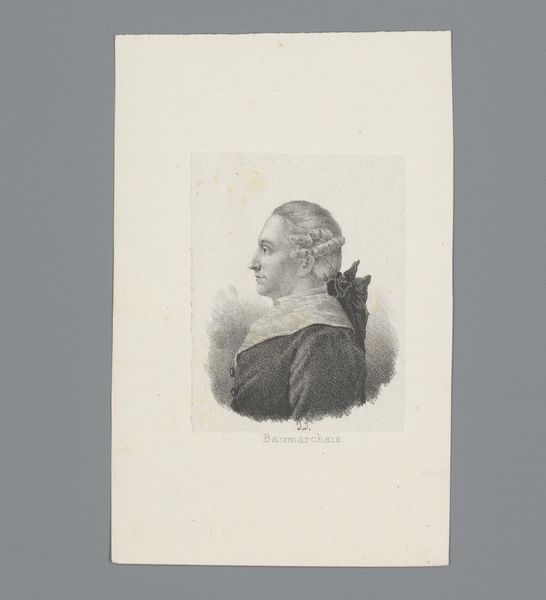
Fotoreproductie van een schets van een portret van een onbekende boer door Albert Hendschel before 1870
0:00
0:00
drawing, paper, pencil
#
portrait
#
drawing
#
paper
#
pencil
#
history-painting
#
academic-art
#
realism
Dimensions: height 140 mm, width 100 mm
Copyright: Rijks Museum: Open Domain
Curator: Let's turn our attention to this reproduction of a sketch, titled "Fotoreproductie van een schets van een portret van een onbekende boer door Albert Hendschel," made before 1870. The artist has employed pencil on paper for this work. Editor: Ah, yes, an unknown farmer gazing out at us, stuck in this infinite loop! I wonder, did he ever imagine he’d be reproduced like this, an echo across time? The shading, so light, gives him a kind of…fragile dignity. Curator: Indeed, Hendschel's sketch provides a fascinating glimpse into 19th-century representations of rural figures, common during that era. Artists often sought to capture an idealized image of the common person, fitting in historical contexts. The academic style is clearly visible, aligning the portrayal of peasantry with traditional historical narratives. Editor: Academic, you say? To me, the lines feel like whispers, barely there. It is if the farmer might dissolve if we stare too intently. His rough beard against that starched collar, I feel he is a real person who happens to represent all people in art at once. Curator: The juxtaposition of the rough beard and starched collar is definitely a conscious choice by the artist. It probably symbolizes the socio-economic tensions of the time, but that's what I find fascinating. This portrait is not necessarily about individuality but about constructing a recognizable, universal figure. The way history frames the interpretation of common people as subjects... it’s always filtered, isn’t it? Editor: Filtered or found? Perhaps Hendschel saw in this particular farmer a strength and stillness that transcended class. The vulnerability and the will both. Those eyes hint at stories untold... We tend to flatten these lives into academic or historical checkboxes and that does a great injustice to art. Curator: It is quite a testament of skill how such little lines can stir so many different interpretations, don't you think? Editor: Beautifully said! An empty canvas speaks because somebody whispers something honest in the lines and colours.
Comments
No comments
Be the first to comment and join the conversation on the ultimate creative platform.
